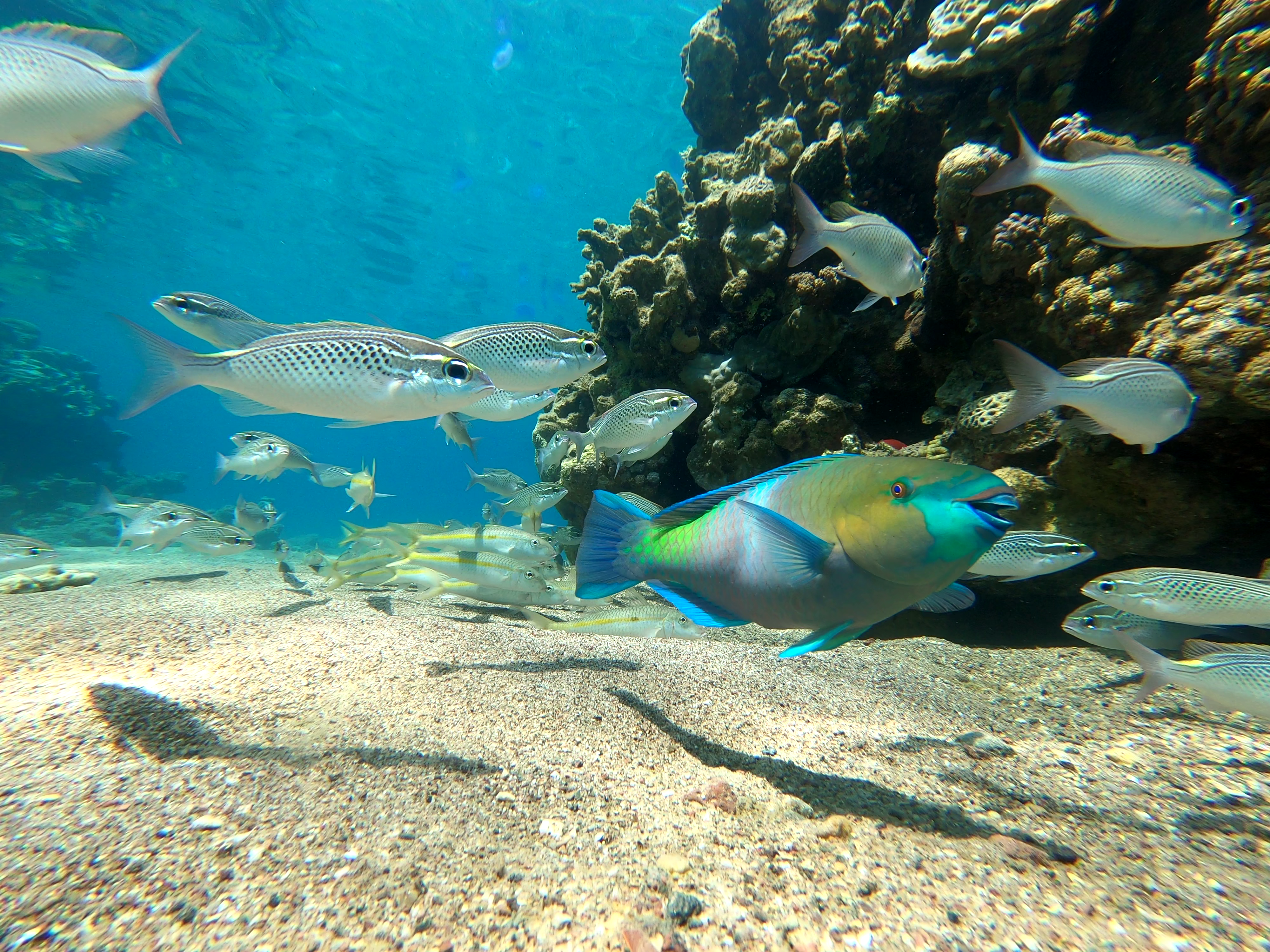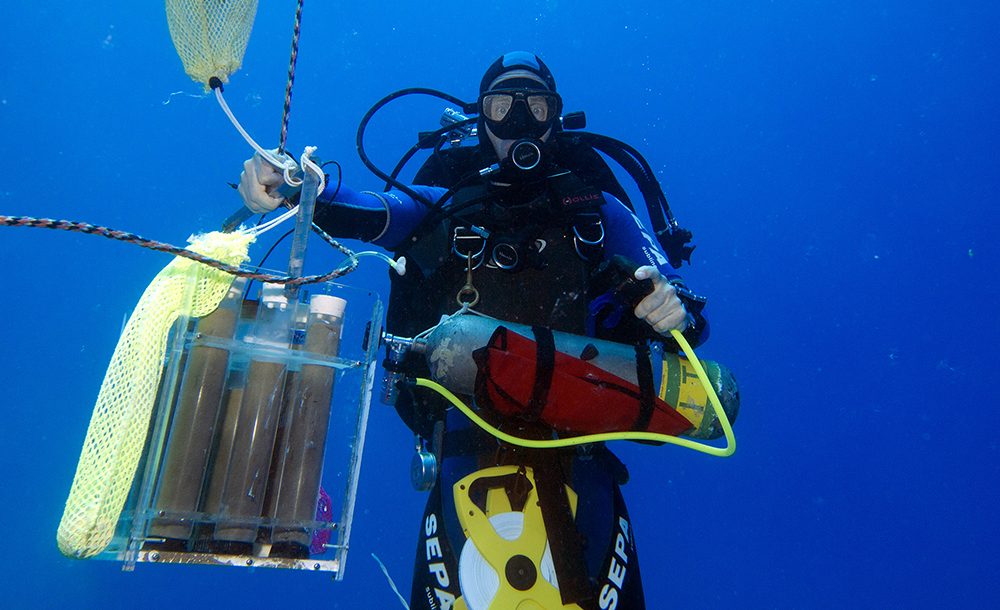Israeli scientists use prawns to fight tropical disease
October 27, 2019Aquaculture practices are most commonly used to increase food security, ensure the nutritional needs of people, boost a nation’s economy through trade, and provide jobs. However, Israeli researchers are using aquaculture techniques to reduce tropical infectious diseases
Professor Amir Sagi, along with his Ph.D. student Tom Levy at the Ben-Gurion University of the Negev were able to use a new biotechnology to cultivate a single-sex population of prawns (Macrobrachium rosenbergii) that will act as a biological agent against schistosomiasis, a waterborne disease. This was done without hormones, chemicals, or permanent genetic modifications.
The US-Israeli start-up, Enzootic, which was established by Ben Gurion University graduates in 2012, helped to create the biotechnology behind the aquaculture techniques of this all-female population of prawns. Enzootic focuses on developing and implementing this new biotechnology of marine and freshwater crustaceans around the world.
In order to achieve a single-sex, all-female community without using genetic engineering techniques, the parents were specifically chosen depending on their chromosomes. Once selected and bred, they produced only female offspring.
The aquaculture technique of having an all-female prawn population has its benefits. “Males are more territorial and aggressive, so we think that we will be able to culture the females in higher densities,” says Professor Amir Sagi, researcher, and professor at the National Institute for Biotechnology in the Negev (NIBN), part of the Ben-Gurion University (BGU). “We think that using an all-female, mono-sex population will help to intensity the aquaculture side of things,” he adds.

How prawns are helping to treat schistosomiasis
Schistosomiasis is a disease transmitted in waters that contain trematode worm larvae, a parasite that uses snails as a host. This disease occurs in subtropical and tropical regions, particularly in underdeveloped areas with both, unsatisfactory sanitation systems and access to safe drinking water.
About 90% of the people who contract schistosomiasis and need treatment are from Africa. The disease is contracted through daily activities that expose them to infested waters such as agricultural practices, fishing, recreational activities, and domestic chores.
Prevention and treatment strategies put forth by the World Health Organization (WHO) involve using the medicine praziquantel, in a mass drug administration (MDA) campaign to target affected populations.
Now, however, Sagi and Levy have come up with a new way of combating schistosomiasis by using prawns, a natural predator of snails (intermediate hosts of the schistosomiasis parasite), as a biological control to eliminate the source of the disease. This new approach could potentially reduce the number of cases that affect humans, while replacing the use of other approaches that negatively impact the ecosystem such as using pesticide chemicals to target the snails.
Releasing an all-female population of prawns has its benefits. As previously mentioned, females are less aggressive and territorial than males, which means they can live in higher densities and can, therefore, combat the disease-bearing snails more efficiently. Since prawns are not always native to regions with schistosomiasis, releasing a single-sex population eliminates concerns regarding an invasive species changing the ecosystem.
The implementation of prawn aquaculture has the potential to stimulate local economies, increase food security, and decrease malnutrition. For example, releasing prawn populations in rice paddies, where workers would normally be exposed to schistosomiasis, would help to boost rice production as well as improve the public health situation. In Bangladesh, when prawn populations were introduced to rice paddies, soil fertility improved, which led to an increase in rice production and a decrease in pest species.
The prawn species can be grown and harvested during the rice season, which would add to the income of the farmers as the market price of prawns is higher than that of rice. Once harvested, prawns would be restocked in these areas through aquaculture initiatives such as Enzootic. “Since the prawn communities released are mono-sex (one single-sex), there is no hazard of the population growing and thus, becoming invasive,” says Sagi. In addition, prawns are a high source of protein, which is critical in the impoverished areas where schistosomiasis occurs.

Potential Setbacks
In order for a newly introduced prawn population to survive, water conditions need to be ideal, and nets would have to enclose the aquaculture sites. Anthropogenic activities such as washing clothes, or spraying insecticides on nearby crops would have to be limited, as to not change the water quality, which could potentially inhibit the prawn’s development. These changes to the local culture would have to be implemented in order to create a healthy environment for the prawns. In addition, some environmental risks that could affect the prawn communities include disease, predation, rainfall, and extreme climate.
To determine where prawn communities should be located, scientists need to assume that trematode larvae are transported actively, from the water in which the larvae originated, and not passively, such as through currents. This ensures that local waters are infected and, therefore, if prawns are introduced here, they will effectively contain schistosomiasis in the area.
Other Uses
“We currently have a project in northern Israel that is using an all-female population of prawns instead of chemicals in fish ponds,” says Sagi. In northern Israel, there has been a spike in the parasite, Centrocestus (a trematode parasite), which affects fish. Just like schistosomiasis, Centrocestus is carried by snails which are in this case, invasive to northern Israel. “These snails are growing at a very fast rate,” says Sagi. “Since fish are located within the water column while prawns and snails are on the benthos, or bottom of the water column, the prawns can get rid of the snails without harming the endemic fish,” he adds.
Sagi and his team are also building hatcheries in Thailand and have been in touch with Chinese entities to bring their biotechnology there. “So far, we are still in the research and development stages in Africa. Once we start implementing there, according to preliminary research, the prawns will be very efficient.”
Future Goals
The implementation of prawn aquaculture also generates profit for the region, as previously described. A boost in the market of these regions could allow for monetary independence with regard to public health. Therefore, this is a sustainable approach for developing nations regarding disease control and economic development.
“Overall, this is a new technology and there are many aspects of it that should be further studied,” says Sagi. “All-male and all-female populations can be used for different products. We are a part of a new trend of animal husbandry in crustaceans. This is still a very young industry and we still have a long way to go, but we are optimistic.”
The study performed by Sagi and Levy showed that increasing the consumption of snails via prawn populations, along with the conventional MDA practices, has been effective in reducing the outbreak and reinfection of schistosomiasis.
With the potentially widespread implementation of both practices, there is a chance that the WHO goal of controlling the morbidity rate by 2020 is feasible. There is even a possibility of meeting their goal of eliminating this disease as a public health hazard by 2025. The morbidity rate is defined as a deviation from a physical and mental state of well-being. It describes the number of people who are ill and have a measurable marker of the disease.
“One could think of the prawn’s method as breaking the cycle of the disease because they are terminating the intermediate host, the snail. But on the other hand, you have to treat the people who are affected, which is the broad approach to pest management,” says Sagi. “I think our biocontrol system is part of this effort. You need to treat the people, cleanse the environment from snails, and reestablish a healthy population. It is a multi-faceted effort,” he concludes.
This ZAVIT article was also published in The Jerusalem Post on 10/27/2019.







